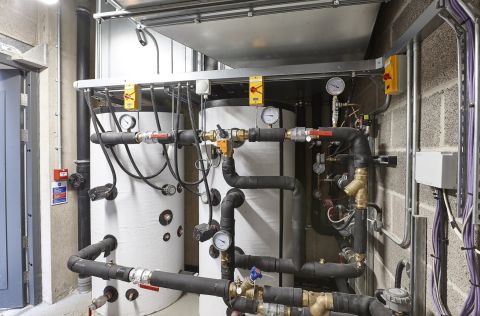Buying guide
Cooling Fans
Things to consider
When it comes to hot days and humid nights, a cooling fan can provide instant comfort for the whole family. But with such a wide range to choose from, how do you know which fan is right for you? Don’t sweat it - this handy guide will help to ensure you pick the right fan for you, your home and your budget.
Where are you going to use it?
Deciding where you are going to be using your fan will help you figure out what style and features you will need. If you require a fan to help you cool a larger room, then floor or tower fans are ideal due to their larger size and reach, whereas if you require a fan to simply cool yourself, then a desktop fan may be best. It is also worth considering the portability of the fans, if you plan on moving it from room to room then make sure you pick one that has an integrated carry handle and differing fan speeds that will suit multiple room sizes
What style do you need?
Cooling fans have come a long way from the basic three blade ones we’re used to. Now with styles to perfectly suit your application, you can choose between wide reaching floor fans, small desktop fans for personal cooling or tower fans which are great for all round use.
Floor Fans
Floor fans, in particular the Dimplex 360 fan, have a wide fan reach making them ideal for larger rooms. They are also lighter in weight, making them easily portable around the home.
Desktop Fans
With a small, compact footprint, desktop fans are ideal for use on desks or bedside tables, providing personal cooling.
Tower Fans
Tower fans are a style of floor fan. Usually slim line and sleek in design, these fans will fit seamlessly into their surroundings. They are particularly useful for bedrooms, being the appropriate height for fanning you whilst in bed.
What additional features would you like?
Once you’ve decided where you are going to be using your cooling fan, it’s important to consider any additional features you’d like it to offer, such as oscillation (rotation) functions and differing wind modes and speeds. Most Dimplex fans come with three fan speeds, low, medium and high, and some come with eco, sleep and natural wind modes, ensuring maximum comfort for each application. Our premium tower fan, Ion Fresh even features a built in ioniser that discharges negative ions, these attach to positive ions and drop them out of the air to create a fresher environment. It also features three speed settings and three breeze modes, so you can find the perfect balance for your comfort.
What controls would you like?
All Dimplex fans have been designed with ease of use in mind so have clear LCD and LED displays. Most of our fans also come with a remote control allowing you to use your fan from the comfort of your seat. As an added feature, some cooling fans incorporate a runback timer, meaning you can set your fan to run for a certain period of time before turning itself off.
What about safety?
If you have children or pets in the home, then it is worth choosing a fan that has good stability with a wide base and enclosed fan blades. This will ensure the fan won’t be easily knocked over, fur can’t get caught, and saves little fingers from harm. Cooling fans from Dimplex also come with a one year warranty as a minimum, offering added peace of mind.

How do we maximise the potential of heat pump technology to help us achieve net-carbon objectives?
The roadmap to achieve the UK’s 2050 net-zero carbon target is still relatively unclear. This creates uncertainty about the implementation of low carbon solutions in the industry. The lack of direction in turn affects the ability to plan for future developments. Difficult specification choices, doubts over futureproofing strategies, and lack of preparedness for regulatory changes, are just some of the factors affecting heat pump specification in new developments and existing buildings in both residential and commercial sectors.

Which technologies are the most viable to deliver the decarbonisation of heating?
To deliver the decarbonisation of heating, we should deploy a wide range of technologies that can help to eliminate the use of high carbon fossil fuels. Electric solutions, especially those that utilise renewable energy, offer a viable route to ensuring our homes are heated in a low carbon way. To successfully transfer to electrical infrastructures and make the necessary adjustments that bring us closer to achieving the UK’s 2050 net zero target, the industry will need a clear plan with achievable interim targets.

How can technological innovation in heat pumps help address the challenges of climate change?
Innovations in heat pump technology are set to give us the tools for the decarbonisation of heat within commercial and residential developments. With over 30% of UK carbon emissions attributed to the heating of our buildings, tackling the carbon emissions connected with heat will represent a large contribution to our ongoing battle with climate change.











